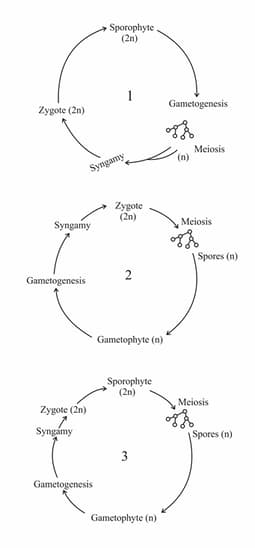EASY
Earn 100
Life cycle of Polysiphonia and Chlamydomonas are respectively
(a)Haplontic and diplontic
(b)Diplontic and haplodiplontic
(c)Haplodiplontic and diplontic
(d)Haplodiplontic and haplontic
50% studentsanswered this correctly
Important Questions on Plant Kingdom
MEDIUM
EASY
EASY
MEDIUM
Based on the following characteristics of life cycles identify and arrange the plants respectively.
| A) Haplontic | i) Laminaria |
| B) Diplo-haplontic | ii) Volvox |
| C) Haplo-diplontic | iii) Polysiphonia |
| D) Diplobiontic | iv) Salvinia |
| E) Diplontic | v) Fucus |
MEDIUM
A. Independent one-celled or many-celled gametophytes.
B. Multicellular dependent sporophyte.
C. One or few celled dependent gametophytes.
D. Reduced sporophyte as 1-celled structure.
These statements are correct for which group of plants?
MEDIUM
MEDIUM

EASY
EASY
MEDIUM
EASY
Reason: Zygotic meiosis occurs in Spirogyra.
MEDIUM
EASY
EASY
Which of these have diplontic life cycle?
MEDIUM
EASY
HARD
A. Femur - Longest bone in human body.
B. Coxal - Formed by the fusion of three bones ilium, ischium and pubis.
C. Hyoid - A single U-shaped bone at the base of buccal cavity.
D. Scapula - Large triangular flat bone situated in the ventral part of the thorax between the second andseventh rib.
E. Occipital bone - Possess obturator foramen for the exit of spinal cord.
EASY
EASY

